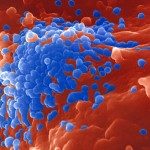Link to Pubmed [PMID] – 12032323
Proc. Natl. Acad. Sci. U.S.A. 2002 May;99(11):7566-9
Nuclear mtDNA sequences (numts) are a widespread family of paralogs evolving as pseudogenes in chromosomal DNA [Zhang, D. E. & Hewitt, G. M. (1996) TREE 11, 247-251 and Bensasson, D., Zhang, D., Hartl, D. L. & Hewitt, G. M. (2001) TREE 16, 314-321]. When trying to identify the species origin of an unknown DNA sample by way of an mtDNA locus, PCR may amplify both mtDNA and numts. Indeed, occasionally numts dominate confounding attempts at species identification [Bensasson, D., Zhang, D. X. & Hewitt, G. M. (2000) Mol. Biol. Evol. 17, 406-415; Wallace, D. C., et al. (1997) Proc. Natl. Acad. Sci. USA 94, 14900-14905]. Rhesus and cynomolgus macaque mtDNA haplotypes were identified in a study of oral polio vaccine samples dating from the late 1950s [Blancou, P., et al. (2001) Nature (London) 410, 1045-1046]. They were accompanied by a number of putative numts. To confirm that these putative numts were of macaque origin, a library of numts corresponding to a small segment of 12S rDNA locus has been made by using DNA from a Chinese rhesus macaque. A broad distribution was found with up to 30% sequence variation. Phylogenetic analysis showed that the evolutionary trajectories of numts and bona fide mtDNA haplotypes do not overlap with the signal exception of the host species; mtDNA fragments are continually crossing over into the germ line. In the case of divergent mtDNA sequences from old oral polio vaccine samples [Blancou, P., et al. (2001) Nature (London) 410, 1045-1046], all were closely related to numts in the Chinese macaque library.
